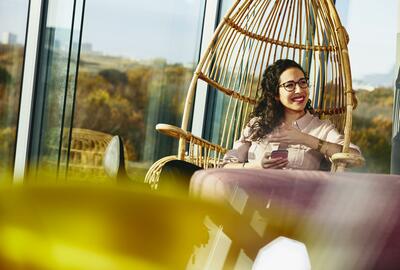Dress codes have been trending more casual over the past few decades, especially the last few years.
Today, ‘work appropriate’ is drastically different from what it was in the 90s.
Business attire such as slacks, blazers and shoes polished to a shine have been pushed to the wayside. Now, we favour jeans, sweaters and crisp designer sneakers. Sometimes, even T-shirts get a pass, depending on the workplace. It is a brave new world for those used to the business casual routine.
The shift is largely influenced by tech companies' ultra-casual environment. Tech companies tend to have a casual dress code, if they even have one at all. Think of Steve Jobs’ famous work uniform, which paired a black turtleneck with navy blue blue jeans.
While many workplaces have adopted this more casual approach to work attire, it’s not universal. Some employers continue to hold on to more traditional dress codes. So when it comes time to head to a job interview, that raises the question: how exactly do you know what to wear? Here are a few good practices to follow for a job interview outfit.
be authentic to who you are
Interviews are a test of the fit between you and a potential employer. Wear something that makes you feel like the best version of yourself. That will translate into the interview if you feel confident in what you’re wearing.
The days of hiding your tattoos or dressing in muted neutral tones to project professionalism are on the way out. People – hiring managers included – want you to be your authentic self because that’s who they’re hiring.
match your look to the job
If you’re interviewing for a job at a bank, what you wear will be different than if you’re interviewing to work at a bar. Similarly, what you wear when interviewing for an executive role differs from what might be expected in a junior role. Dress for an interview based on the company you're interviewing at.
Employers in fields such as law, finance, or consulting are often more traditional, and traditionalism extends to their dress code. If the role is client-facing, there’s also a good chance the dress code will be more professional. Consider what’s standard in the industry and company culture when choosing what to wear to a job interview.
check out their social media
Most companies have an online presence and social media pages these days. Don’t be afraid to scope out their Instagram or LinkedIn pages to get a feel for the tone of their workplace.
There’s a good chance you’ll see photos from company events (on LinkedIn especially). Check out what the employees wear and use that as a baseline for your wardrobe choices. This can help you gauge what the company's dress code is.
prioritize comfort
Interviews are nerve-wracking as is. Don’t ramp up your feelings of discomfort by wearing something that makes you feel uncomfortable or like you’re playing a role to get the job.
This is not the time to pull out the heels that pinch your toes, a pair of slightly too-small pants, or an itchy dress shirt that makes your skin crawl. That might translate to your body language and demeanour during the interview if you feel uncomfortable.
Stick with something you feel confident in so you can focus 100% of your attention on nailing the interview.
err on the side of dressy
While you don’t want to be drastically overdressed. Think a tuxedo or a floor-length gown — it’s usually a safe bet to dress up a little more than the average employee.
Dressing up shows you respect the company and want to make a good impression. Most hiring managers will appreciate that. Even if you’re slightly overdressed compared to their typical day-to-day attire. Try not to dress in too bright of colors and attempt to lay off the perfumes or colognes in case of allergies.
business casual is the safe play
If you’re truly unsure about the appropriate balance between professional and casual, business casual attire is a safe bet in most workplaces. For men, this means slacks, a suit jacket and a crisp button-down shirt (tie optional, depending on the workplace).
Women can also wear dress pants, blazers and a blouse or substitute a knee-length or longer dress or pencil skirt. Don’t forget your shoes, wear nice dress shoes to complete your look. Both heels and flats are perfectly acceptable; choosing whichever makes you feel most confident is your prerogative.






